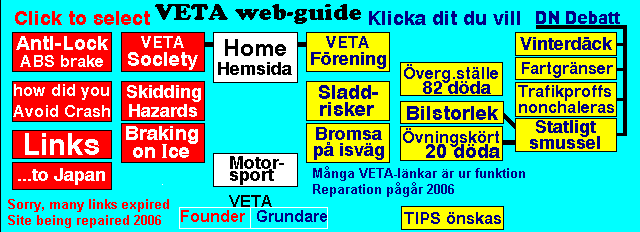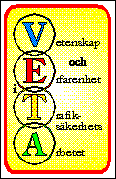Avoid
accidents (tomorrow)
by understanding (today)
the relevant laws of nature
Tyre side forces (S), their sum or 'resultant' (F) and its application point (P)
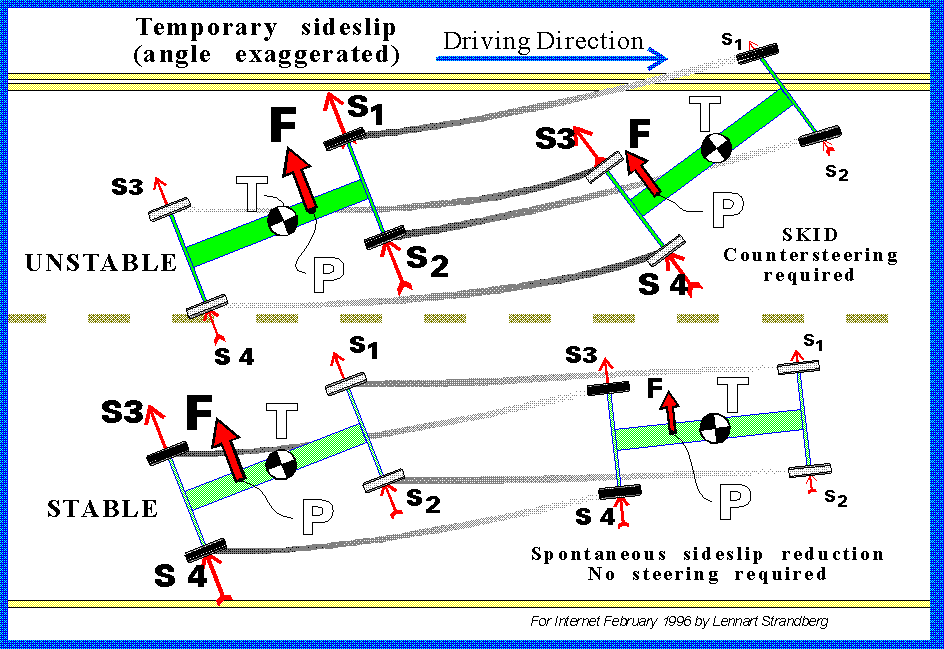
Clicking on the image will enlarge and display it separately for downloading
Small sideslip oscillations are always occuring, due to road unevenness, aerodynamic forces, etc.
However, the current sideslip tends to be amplified by the resulting external forces, if their sum, F, applies to the vehicle (at P) in front of the centre of gravity, T (about which the vehicle is rotating).
Therefore, the vehicle may become unstable (like the upper car), when the side forces increase more with the sideslip angle at the front tyres than at the rear.
Hydroplaning at the rear wheels only may be simulated and perceived in this
skid training car
Yaw Stability may be lost ...
... and your car may spin around by itself
(like the nearmost yellow Combi Coupé in the picture) because:
- the stud protrusion is greater at the front wheels of the average front wheel driven car
- heavy luggage and rear seat passengers (centre of gravity moves rearward) increase side-wind sensitivity
- heavy luggage and rear seat passengers decrease power over-steering tendencies in a rear wheel driven car, but may increase the risk of rear wheel skid in lane change manoeuvres, irrespective of driven wheel position
- heavy luggage and rear seat passengers affect yaw stability on icy roads in different directions depending on both tyre studding and axle weight
- the rear wheels hydroplane when they come out of the tracks of the front wheels (hydroplaning at front only will increase stability, though steerability is lost)
- the rear wheels lock up if the passenger pulls the parking brake
(accidents have occured in Sweden
when amateur teachers in passenger seat tried to stop their private car with single controls - allowed for driver training on all Swedish roads)
- too much of the braking forces are distributed to the rear wheels - due to inadequate brake linings
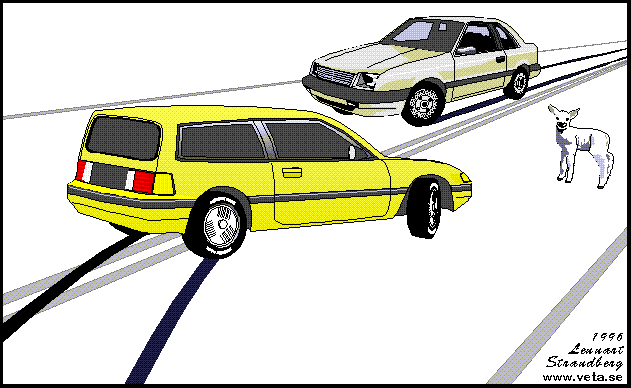
- too much of the braking forces are distributed to the rear wheels - due to corrosion or inadequate maintenance of the braking system components
- too much of the braking forces are distributed to the rear wheels - via the driving shafts in a four wheel driven car without centre differential or with visco-devices limiting the difference in angular velocity between front and rear wheels
- too much of the braking forces are distributed to the rear wheels - upon unloading of the rear wheels
In the opposite case (too much braking forces at the front) deceleration capacity and steerability will diminish - such as for
the distant brown Sedan in the picture - contributing to
fatalities (in Swedish)
Spin-out may also be triggered ...
- ... if the driver
mis-use the antilock (ABS) function
- ... by emergency braking in a car without ABS
(in braking tests with 66 ordinary drivers, loss-of-control was much more frequent with disconnected ABS)
- ... by pendulum steering, inducing yaw resonance
- ... if the driver releases the accelerator in a rear wheel driven car on an icy road
- ... if the driver reduces the spin of the front driven wheels (by releasing the accelerator pedal e.g. in finishing an over-taking manoeuvre)
- ... by pressing the clutch pedal in a front wheel driven car before turning the steering wheel from straight-forward position
- ... if the driver counter-steers too late and too slow in a rear wheel skid (check out in television broadcasts from rally and racing cars seemingly not yawing at all, though the steering wheel motions are very quick and frequent)
Official Statistics of Sweden indicate that
instability and rear wheel skids are much greater problems than poor steerability for the average driver when roads become slippery.
Accidents with oncoming vehicles "Head-on" and Single vehicle accidents (poor directional stability) contribute to a significantly greater percentage of the accidents when the road has ice or snow on its surface. Compare the left and right columns in the diagram, showing annual averages from the years 1988 to 1995.
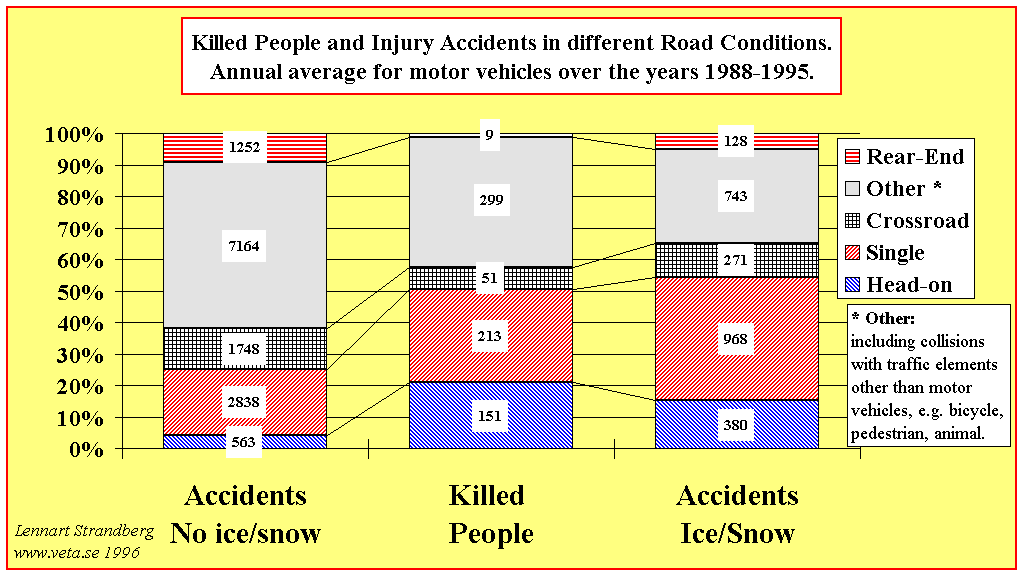
Clicking on the image will enlarge and display it separately for downloading
To be completed later with descriptions of relevant accident cases

Webpage opened in February. To VETA website in April 1996.

Best Wishes from
Sweden
and
Lennart Strandberg
Charter Chairman of the
non-profit VETA society
Email:
lennart.strandberg@veta.se
To top of page

To VETA Homepage
(website access no.
 since 30 April 1996)
since 30 April 1996)
Email on web-related topics:
webmaster@veta.se
URL= http://www.veta.se/yawstab.htm Access no.
 since 27 April, 1996.
since 27 April, 1996.
Imagemap to all VETA web-pages for your navigation
